What Was The Medieval ‘Two Sleeps’ Habit?
Conny Waters - AncientPages.com - Most people appreciate the benefits of a good night's sleep. Healthy sleep involves getting sufficient uninterrupted sleep regularly. When we achieve quality sleep, our brain performance, mood, and overall health improve significantly.
However, the situation was quite different during the Middle Ages when people practiced the habit of "two sleeps." The duration of the first and second sleep periods varied depending on the time of year and individual preferences. It was common for people to go to bed around nine o'clock and sleep until eleven o'clock, followed by a waking period until around one o'clock. They would then return to sleep until sunrise.
Credit: British Library Royal 16 G VI f. 23
The night was divided into two distinct halves, with a period of wakefulness in between the two sleep segments.
In the early 1990s, historian Roger Ekirch stumbled upon a fascinating discovery while researching the history of night-time for a book. He came across a manuscript that described a nine-year-old girl named Jane Rowth and her mother waking up from a short sleep at 11 P.M. on April 13, 1699, in a small English village.
This mysterious phenomenon, known as "biphasic sleep" or "double sleeping," piqued Ekirch's interest, prompting him to delve deeper into the subject. As he expanded his search to include online databases of other written records, it became evident that this practice was more widespread and normalized than he had initially imagined.
In his book At Day's Close: Night in Times Past Ekirch explains that his findings revealed that references to "first sleep" were present in renowned works of medieval literature, such as Geoffrey Chaucer's "The Canterbury Tales" (written between 1387 and 1400) and William Baldwin's satirical book "Beware the Cat" (1561), considered by some to be the first novel.
However, the evidence did not stop there. Ekirch discovered casual mentions of the twice-sleeping system in many sources, including letters, diaries, medical textbooks, philosophical writings, newspaper articles, and plays, spanning hundreds of references.
In Charles Dickens's Barnaby Rudge (1840) it is written that "He knew this, even in the horror with which he started from his first sleep, and threw up the window to dispel it by the presence of some object, beyond the room, which had not been, as it were, the witness of his dream."
During the waking hours of the night, people engaged in various activities. Some families had a late meal, while others prepared food or gathered utensils for the next day's work. Particularly in winter, it was crucial to replenish the fireplace with wood to ensure the house remained warm throughout the night. Interestingly, doctors often prescribed medication between the first and second sleep periods.
Additionally, it was widely accepted that consuming food or drink during the night was beneficial. It is said that the renowned scientist and artist Leonardo da Vinci utilized this waking time to stay in bed and reflect on his studies and accomplishments from the day.
Medicine textbooks of the past advised spending the first sleep period lying on the right side, but when returning to bed for the second sleep, it was considered important to turn over and lie on the left side. However, some individuals chose to remain awake during the waking period between the two sleeps.
Credit: Public Domain
Biphasic sleep was not a unique phenomenon confined to England. Ekirch's research revealed that this practice was widespread throughout the pre-industrial world. In France, the initial sleep was referred to as the "premier somme," in Italy, it was known as "primo sonno." Ekirch uncovered evidence of this habit in diverse locations across Africa, South and Southeast Asia, Australia, South America, and the Middle East.
Far from being a peculiarity of the Middle Ages, Ekirch began to suspect that biphasic sleep had been the dominant sleeping pattern for millennia—an ancient default inherited from our prehistoric ancestors. The earliest record he found dates back to the 8th Century BC, in the 12,109-line Greek epic The Odyssey. At the same time, the last hints of its existence were traced to the early 20th Century before it somehow faded into obscurity.
The practice of biphasic sleep was prevalent until the early 19th century. This shift coincided with the dawn of the Industrial Revolution, which brought about a more hectic pace of life. Crucially, the availability of technologies for maintaining artificial light played a significant role in this change.
Biphasic sleep persists in certain Middle Eastern, Latin American, and Mediterranean cultures, where afternoon naps, known as siestas, are commonly practiced. However, the prevalence of biphasic sleep has diminished due to the widespread availability of artificial lighting and the demands of contemporary work schedules.
Researchers have recently investigated the potential advantages of biphasic sleep patterns. While some studies indicate that afternoon naps can enhance alertness and cognitive function, other research has yielded mixed or inconclusive results regarding the benefits of this sleep pattern. The ongoing exploration of biphasic sleep aims to understand its impact on human health and performance.
Written by Conny Waters – AncientPages.com Staff Writer
Copyright © AncientPages.com All rights reserved. This material may not be published, broadcast, rewritten or redistributed in whole or part without the express written permission of AncientPages.com
Expand for referencesWilliams, Simon. “Counting Sleep.” RSA Journal 159, no. 5555 (2013): 36–39.
More From Ancient Pages
-
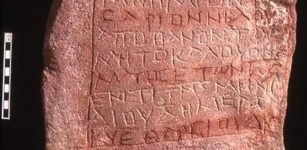 Nabataean Culture Lived On Long After Their Kingdom Disappeared – New Evidence
Archaeology | Feb 27, 2019
Nabataean Culture Lived On Long After Their Kingdom Disappeared – New Evidence
Archaeology | Feb 27, 2019 -
 Mediterranean Sea Was Hotter 2,000 Years Ago And Contributed To The Fall Of The Roman Empire
Archaeology | Jul 27, 2020
Mediterranean Sea Was Hotter 2,000 Years Ago And Contributed To The Fall Of The Roman Empire
Archaeology | Jul 27, 2020 -
 New Path For Early Human Migrations Contradicts A Single ‘Out Of Africa’ Theory
Evolution | Oct 5, 2023
New Path For Early Human Migrations Contradicts A Single ‘Out Of Africa’ Theory
Evolution | Oct 5, 2023 -
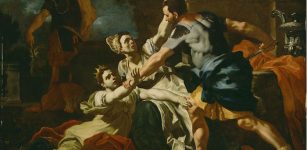 Ancient Roman Laws Give Us A Window Into A World Of Abuse
Featured Stories | May 24, 2022
Ancient Roman Laws Give Us A Window Into A World Of Abuse
Featured Stories | May 24, 2022 -
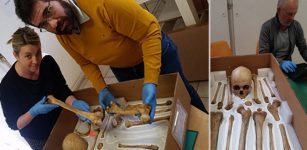 5000-Year-Old Cold Case: Neolithic Fisherman Died By Drowning – Forensic Study Shows
Archaeology | Feb 14, 2022
5000-Year-Old Cold Case: Neolithic Fisherman Died By Drowning – Forensic Study Shows
Archaeology | Feb 14, 2022 -
 Underwater City: Unveiling The Secrets At The Bottom Of Fuxian Lake
Ancient Mysteries | Jun 13, 2015
Underwater City: Unveiling The Secrets At The Bottom Of Fuxian Lake
Ancient Mysteries | Jun 13, 2015 -
 Unexplained Cases Of Holographic Projections In Ancient And Modern Times
Ancient Mysteries | Sep 14, 2018
Unexplained Cases Of Holographic Projections In Ancient And Modern Times
Ancient Mysteries | Sep 14, 2018 -
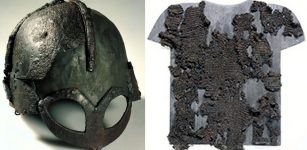 Unique Gjermundbu Helmet – Why Has Only One Viking Age Helmet Been Found In Scandinavia?
Artifacts | Mar 23, 2018
Unique Gjermundbu Helmet – Why Has Only One Viking Age Helmet Been Found In Scandinavia?
Artifacts | Mar 23, 2018 -
 Modern Humans Traveled Across The Eurasian Steppe 45,000 Years Ago
Archaeology | Aug 20, 2019
Modern Humans Traveled Across The Eurasian Steppe 45,000 Years Ago
Archaeology | Aug 20, 2019 -
 Mystery Of The Lost Anglo-Saxon Queen Cynethryth May Soon Be Solved By Archaeologists
Archaeology | Aug 2, 2022
Mystery Of The Lost Anglo-Saxon Queen Cynethryth May Soon Be Solved By Archaeologists
Archaeology | Aug 2, 2022 -
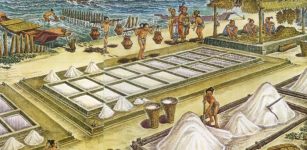 Salt Workers’ Residences At Underwater Maya Site – Identified
Archaeology | Nov 22, 2021
Salt Workers’ Residences At Underwater Maya Site – Identified
Archaeology | Nov 22, 2021 -
 Posca: ‘Wine Of The People’ Was Popular In Ancient Rome And Greece
Ancient History Facts | Sep 26, 2018
Posca: ‘Wine Of The People’ Was Popular In Ancient Rome And Greece
Ancient History Facts | Sep 26, 2018 -
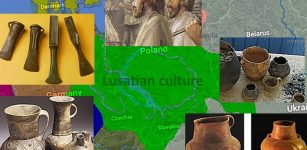 Lusatian Culture: Ancient Traders Of Central Europe Built Strongly Fortified Settlements To Withstand Scythian Attacks
Civilizations | Jan 27, 2024
Lusatian Culture: Ancient Traders Of Central Europe Built Strongly Fortified Settlements To Withstand Scythian Attacks
Civilizations | Jan 27, 2024 -
 Bizarre Devil’s Tramping Ground In North Carolina Is Avoided By People And Animals
Featured Stories | May 1, 2019
Bizarre Devil’s Tramping Ground In North Carolina Is Avoided By People And Animals
Featured Stories | May 1, 2019 -
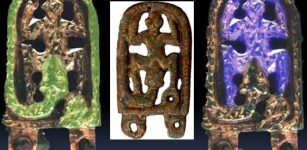 Unique Medieval Bronze Buckle Of A Snake Devouring A Frog-Like Creature Found In Brno, Czech Republic
Archaeology | Dec 13, 2023
Unique Medieval Bronze Buckle Of A Snake Devouring A Frog-Like Creature Found In Brno, Czech Republic
Archaeology | Dec 13, 2023 -
 Katana ‘Soul Of The Samurai’ – Most Famous Japanese Sword With Long Tradition
Ancient History Facts | Apr 12, 2018
Katana ‘Soul Of The Samurai’ – Most Famous Japanese Sword With Long Tradition
Ancient History Facts | Apr 12, 2018 -
 Negev Desert’s Ancient Site Tells Story About Humans, Neanderthals Coexistence
Archaeology | Jun 19, 2021
Negev Desert’s Ancient Site Tells Story About Humans, Neanderthals Coexistence
Archaeology | Jun 19, 2021 -
 Viking Cemetery In Lutomiersk And DNA May Solve The Mystery Of Norse Warriors In Central Poland
Vikings | Jan 7, 2025
Viking Cemetery In Lutomiersk And DNA May Solve The Mystery Of Norse Warriors In Central Poland
Vikings | Jan 7, 2025 -
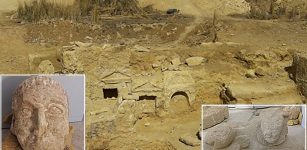 Remains Of Graeco-Roman Temple Discovered Near Egypt’s Siwa Oasis
Archaeology | Apr 6, 2018
Remains Of Graeco-Roman Temple Discovered Near Egypt’s Siwa Oasis
Archaeology | Apr 6, 2018 -
 Smallest Arm Bone In Human Fossil Record Illuminates Homo Floresiensis Origin
Archaeology | Aug 7, 2024
Smallest Arm Bone In Human Fossil Record Illuminates Homo Floresiensis Origin
Archaeology | Aug 7, 2024


